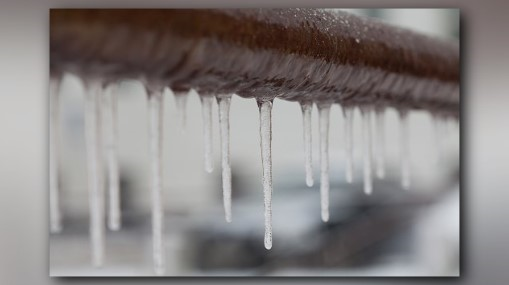Essential Tips to Avoid Frozen Pipes in Winter: Specialist Guidance
Essential Tips to Avoid Frozen Pipes in Winter: Specialist Guidance
Blog Article
We have uncovered this post pertaining to Preventing and dealing with frozen pipes below on the web and accepted it made sense to discuss it with you on my blog.

Cold weather can wreak havoc on your pipes, specifically by freezing pipes. Here's how to avoid it from occurring and what to do if it does.
Intro
As temperatures decrease, the risk of icy pipes boosts, possibly resulting in pricey repair work and water damage. Recognizing just how to avoid icy pipes is essential for house owners in chilly climates.
Prevention Tips
Shielding at risk pipelines
Wrap pipelines in insulation sleeves or use warm tape to secure them from freezing temperatures. Concentrate on pipes in unheated or external areas of the home.
Home heating techniques
Maintain interior rooms adequately heated up, specifically areas with plumbing. Open up cupboard doors to permit warm air to distribute around pipelines under sinks.
Just how to identify frozen pipes
Search for reduced water circulation from faucets, uncommon smells or sounds from pipelines, and noticeable frost on revealed pipes.
Long-Term Solutions
Structural adjustments
Take into consideration rerouting pipes far from outside walls or unheated locations. Include additional insulation to attics, basements, and crawl spaces.
Updating insulation
Purchase top notch insulation for pipelines, attics, and walls. Correct insulation helps preserve regular temperature levels and decreases the risk of frozen pipelines.
Safeguarding Exterior Pipes
Garden hoses and exterior faucets
Separate and drain garden hose pipes before winter months. Install frost-proof spigots or cover outside faucets with protected caps.
Understanding Icy Pipelines
What creates pipelines to freeze?
Pipes freeze when revealed to temperature levels below 32 ° F (0 ° C) for extended durations. As water inside the pipelines freezes, it expands, taxing the pipeline walls and potentially causing them to burst.
Threats and problems
Icy pipelines can result in supply of water disruptions, residential or commercial property damages, and expensive repairs. Ruptured pipes can flood homes and cause substantial structural damage.
Indications of Frozen Water Lines
Recognizing frozen pipelines early can avoid them from breaking.
What to Do If Your Pipes Freeze
Immediate actions to take
If you suspect frozen pipelines, maintain faucets open to soothe pressure as the ice melts. Use a hairdryer or towels soaked in warm water to thaw pipes slowly.
Final thought
Preventing frozen pipes requires positive procedures and quick responses. By comprehending the causes, indicators, and preventive measures, homeowners can secure their pipes during cold weather.
5 Ways to Prevent Frozen Pipes
Drain Outdoor Faucets and Disconnect Hoses
First, close the shut-off valve that controls the flow of water in the pipe to your outdoor faucet. Then, head outside to disconnect and drain your hose and open the outdoor faucet to allow the water to completely drain out of the line. Turn off the faucet when done. Finally, head back to the shut-off valve and drain the remaining water inside the pipe into a bucket or container. Additionally, if you have a home irrigation system, you should consider hiring an expert to clear the system of water each year.
Insulate Pipes
One of the best and most cost-effective methods for preventing frozen water pipes is to wrap your pipes with insulation. This is especially important for areas in your home that aren’t exposed to heat, such as an attic. We suggest using foam sleeves, which can typically be found at your local hardware store.
Keep Heat Running at 65
Your pipes are located inside your walls, and the temperature there is much colder than the rest of the house. To prevent your pipes from freezing, The Insurance Information Institute suggests that you keep your home heated to at least 65 degrees, even when traveling. You may want to invest in smart devices that can keep an eye on the temperature in your home while you’re away.
Leave Water Dripping
Moving water — even a small trickle — can prevent ice from forming inside your pipes. When freezing temps are imminent, start a drip of water from all faucets that serve exposed pipes. Leaving a few faucets running will also help relieve pressure inside the pipes and help prevent a rupture if the water inside freezes.
Open Cupboard Doors
Warm your kitchen and bathroom pipes by opening cupboards and vanities. You should also leave your interior doors ajar to help warm air circulate evenly throughout your home.

We had been brought to that editorial on Winter Plumbing Precautions: Preventing Frozen Pipes from a good friend on a different web address. Feel free to set aside a second to share this blog posting if you enjoyed it. Kudos for your time. Please come visit our blog back soon.
Visit Page Report this page